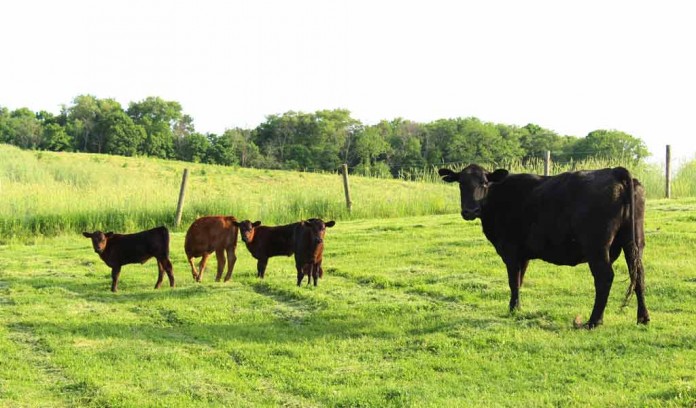BOZEMAN, Mont. — Fertility trumps all other categories when it comes to good cattle genetics, and stayability is largely a function of fertility, said Wade Shafer, executive vice president of SimGenetics and member of the International Genetic Solutions (IGS) genetics team.
“The thing about stayability is it is the most important trait that affects the profitability, in a beef cattle production system, of females remaining in the herd,” he said. If a cow has low fertility, it usually results in that cow being culled from the herd, which has an impact on profits.
New Stay EPD
International Genetic Solutions is releasing a multi-breed Stay EPD (expected progeny differences) using new genetic evaluation software called BOLT (Biometric Open Language Tools). The new software offers Stay EPD on a large collection of purebred and crossbred cattle, something that has never before been offered, according to Shafer.
In that past, stayability and EPDs were available only for purebred cattle, but incorporating crossbred genetics into the mix gives more opportunities to commercial cattle operations, Shafer said.
The BOLT software offers high computation speeds and lets producers access large databases of breed information that could not be accessed all in one place before. The new stayability evaluation includes data on animals of varying breed composition, directly incorporates genomic data, produces true accuracy values and provides Stay EPDs to all IGS partners on a common base.
Multi-breed stayability
Stayability refers to the probability that a sire’s daughter will remain in the herd up to 6 years of age, explained Shafer. A Colorado State University study determined if a cow leaves the herd before reaching age 6, the producer is less likely to have a return on his initial investment of that cow, said Shafer.
The new stayability EPD is calculated for all cattle in the database (not just purebred and fullblood Simmental, Angus, Shorthorns, etc.).
IGS collaborates with 12 breed associations:
-American Simmental Association
-American Shorthorn Association
-American Maine Anjou Association
-American Chianina Association
-Red Angus Association of America
-American Gelbvieh Association
-North American Limousin Foundation
-Canadian Simmental Association
-Canadian Shorthorn Association
-Canadian Limousin Association
-Canadian Gelbvieh Association
-Canadian Angus Association
Genomic data
Because BOLT was used to calculate the Stayability EPD, the evaluation used the DNA markers, pedigree information, and phenotypic data simultaneously in the prediction of the stayability EPD. Anyone who wants to access any of those particular traits can go to anyone of the 12 breed partners within IGS and have that trait available to them, said Wade.
Better accuracy
The BOLT software calculates a true accuracy of the EPD rather than an approximation of accuracy. What does this mean to breeders? In most cases, animals will have a decrease in reported accuracy for stayability, but this reported accuracy will be the true accuracy for the EPD. True accuracy values help producers better manage risk associated with bull selection.
Change in base
All cattle in the IGS collective will be on the same base and comparable directly with each other. Breeders will see movement in stayability EPD from previous evaluations, not only because of changes to methodology but also because of a base change. However, changing the base does not affect the ranking of cattle, it simply shifts all EPDs up or down by the same increment.
Collaborators
Stay EPD uses a random regression approach to predict stayability developed by Dr. Janusz Jamrozik and colleagues from the University of Guelph and the Canadian Simmental Association.
Dr. Scott Speidel at Colorado State University, Dr. Bruce Golden (Theta Solutions), and the genetics team at International Genetic Solutions (IGS) incorporated the new methodology into the IGS evaluation.
(Farm and Dairy contributed to this release.)










